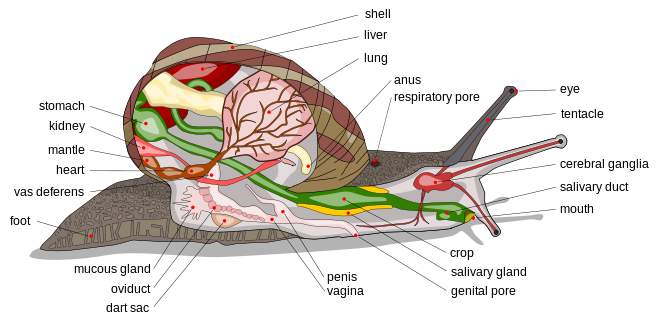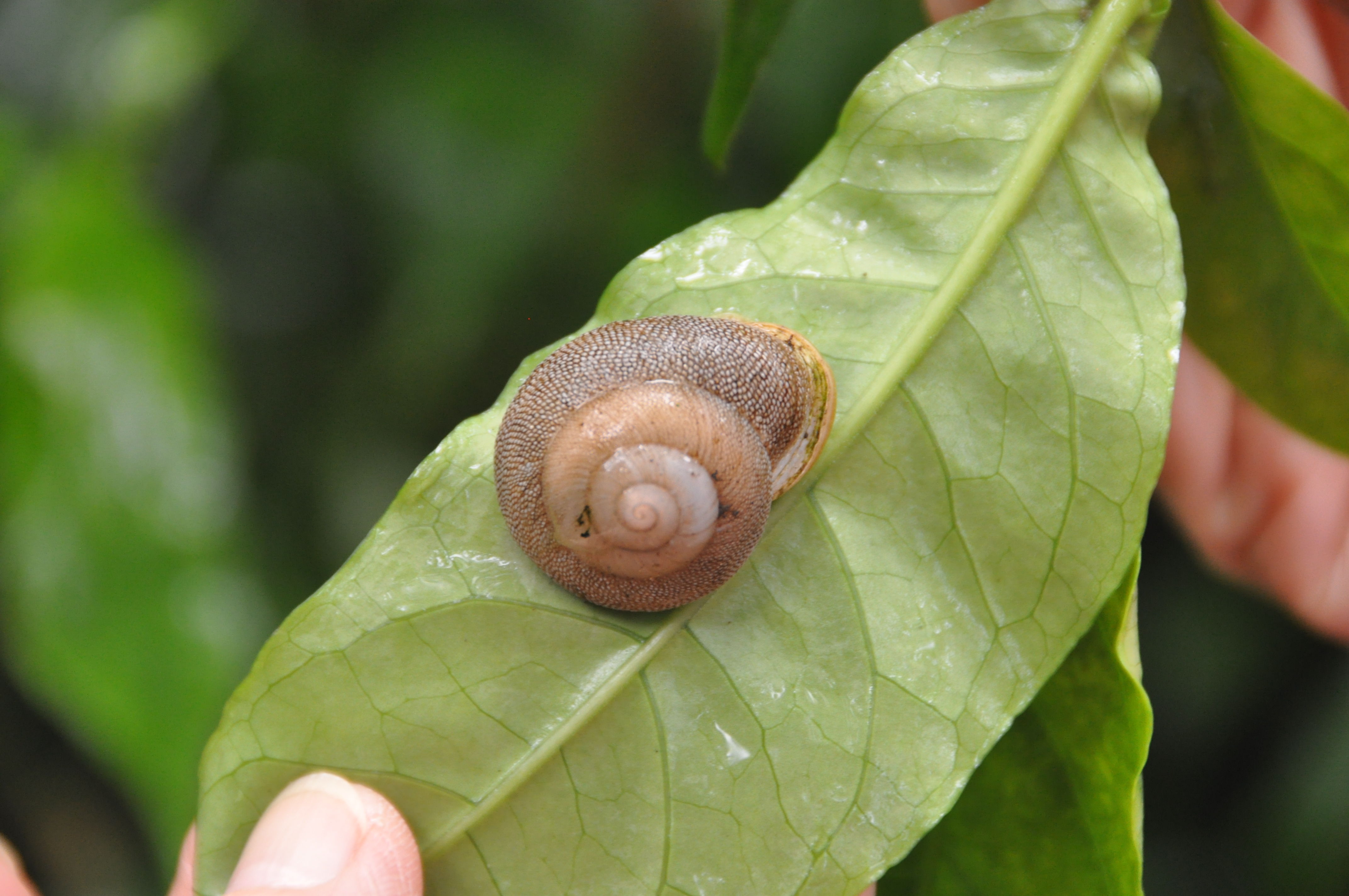Reproduction
Although there is much information in the educated world to assist in learning about terrestrial gastropods in the Polygridae family, there is not much information specific to Inflectarius approximans and their reproduction. As reproduction is fairly the same throughout this category of snails I can tell you some things that might be of interest.

Our land snail has both male and female reproductive organs, in other words it is hermaphroditic (Zipcode Zoo, 2012). Another word for hermaphroditic is monecious, meaning 'one house', or one snail for both reproductive organs (Hickman, 2012). Some snails have what are known as love darts, but the type of snail that we are talking about here does not (Zipcode Zoo, 2012). Love darts are used for courtship and other mating behaviors (Encyclopedia of Life, 2012). Gastropods can be differentiated and identified by the differences in reproductive anatomy (Zipcode Zoo, 2012).
During a type of sexual reproduction called copulation, snails try to keep away from self-fertilization by a transfer in packets of sperm identified as spermatophores through one another's genital pores (Hickman et al. 2012). This stage can take anywhere from four to seven minutes (Encyclopedia of Life, 2012). After the snail eggs have been fertilized by transfer of a spermatophore, the snail usually travels to a nearby log or hole in the ground where it will lay the fertilized eggs (Hickman et al. 2012). Terrestrial snails like Inflectarius approximans grow by direct development (Zipcode Zoo, 2012). As a result of not living in an aquatic environment these snails have lost the veliger larval stage (Hickman, 2012). Snails grow within the eggs during development and when hatch they look just like an adult snail, only smaller, which is what is meant by direct development.
